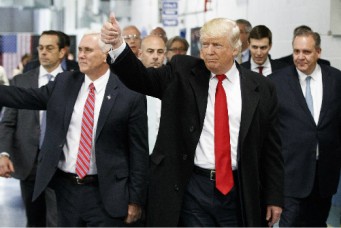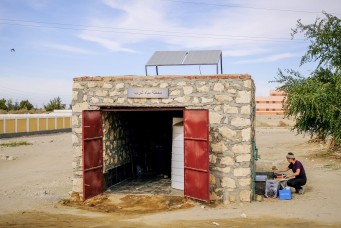The Globalization of Clean Energy Technology
Probing the global implications of China’s clean energy technologies.
The Chinese market for clean energy technology is huge and growing. The reasons behind it, according to Kelly Sims Gallagher, have a great deal to do with the intersection of policy decisions made consciously by the Chinese government and the wider advances in the globalization of the development of high technology in the past twenty years. The story of that intersection is the heart of The Globalization of Clean Energy Technology: Lessons from China. Gallagher, a professor at the Fletcher School of Law and Diplomacy at Tufts University (currently on leave serving as senior policy advisor to the White House Office of Science and Technology Policy), takes lessons from China’s experience in researching, acquiring, and deploying four technologies—natural gas turbines, advanced batteries for automotive vehicles, solar photovoltaics (aPV), and coal gasification—to draw general conclusions about the state of clean energy in a global context.
Gallagher interviewed more than a hundred experts and practitioners, including dozens within China, whose experiences in the industry frame the case study discussions that run through the book. Gallagher complements these accounts with her statistical analysis of Chinese patents as well as useful appendices charting other countries’ policies aimed at creating markets for clean energy technology. The work provides a snapshot of how China has been able to propel itself to the top of clean energy deployment.
The essential role that government policy has played reinforces what environmentalists have long said about the necessity of such market-making interventions as carbon taxes, cap-and-trade, and renewable portfolio standards—which mandate the percentage of electricity that must be derived from low- or zero-carbon sources. As Gallagher writes, traditional fossil fuel power generates effects (what economists call externalities) that are not captured in the price. Likewise, market prices on their own do not explicitly place a premium on technologies that reduce carbon emissions or improve public health. Thus, government regulation acts as a signal to the market that innovation will be rewarded. The more stable a policy, the greater the chances it will sustain a healthy market for low- and zero-carbon technology. That role will only grow in importance with the climate change agreement hammered out by the United States and China in Beijing last November. The Chinese pledge to increase their share of non-fossil fuel energy to 20 percent will guarantee a robust market for all of the technologies studied in this volume.
The Chinese government has responded to this deficiency in market forces through not only regulation, including plans for a nationwide cap-and-trade program, but also massive allocation of financial resources toward this goal. Indeed, according to Gallagher’s interlocutors, access to financing in China was perhaps the country’s greatest advantage over its competitors (in addition to low labor costs). “Implicit but unspoken in the interviews,” Gallagher writes, “is that a government loan is more than just that—it is an indication of government support that enables firms to accrue far more capital than they would be able to do otherwise.”
Government support, whether regulatory or financial, is not sufficient on its own to guarantee widespread deployment. Each of the four technologies covered in the volume have experienced varying degrees of success, due either to extenuating circumstances in the domestic Chinese market, or decisions taken by international companies. Chinese success in solar PV, for example, is well known. While government subsidies are crucial, Gallagher’s interviewees also point to the geographic concentration of Chinese firms and their vertically integrated nature. Chinese manufacturers are thus able to respond quite quickly to shifts in demand for specific types of solar PVs, while at the same time they are pressured to cut costs due to stiff competition. Conversely, the diffusion of natural gas turbine technology has not progressed as well. Because of China’s long history of coal usage, the market for natural gas is not as mature. Much of the manufacturing and technological innovations in turbine technology have been under the purview of a few large firms that, unlike for the other sectors profiled here, have jealously guarded their state-of-the art turbines.
A second key point Gallagher makes—and one in direct response to conventional wisdom on doing business in China—is the perceived improvement in the treatment of intellectual property in the energy sector. While foreign firms, especially in areas such as consumer electronics and entertainment, have seen their copyrights infringed and software pirated, the energy sector participants Gallagher interviewed did not see concerns over lax enforcement of intellectual property law as an insuperable obstacle to their operations. Indeed, there is growing confidence in the ability of Chinese courts to fairly adjudicate disputes, though the sample size of foreign firms suing Chinese firms is very slim. The fact that Chinese labor is inexpensive and that the Chinese government is committed to be a leader in the field in cooperation with international firms seem to outweigh concerns that innovations in clean energy technology will be stolen.
There are important implications arising from Gallagher’s work for the upcoming climate negotiations in Paris toward the end of 2015. A global deal to cut emissions, in Gallagher’s estimation, will only be practicable if met with robust financing measures that will facilitate the adoption of these technologies in the world’s least developed countries. The example the Chinese have set shows that effective and tailored government policies and abundant financing can do a lot to speed the transition. For the world’s sake, one can hope the resources are available to replicate this hitherto successful model.
Neil Bhatiya is a policy associate at the Century Foundation, focusing on U.S. foreign policy in South Asia. He was previously a research fellow at the Streit Council for a Union of Democracies. On Twitter: @NeilBhatiya.






